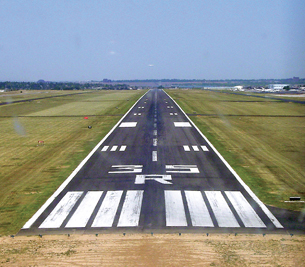Module 4
1. Module 4
1.7. Page 5
Module 4—Magnetic and Electric Fields in Nature and Technology
 Reflect and Connect
Reflect and Connect

© Craig Mills/shutterstock
The movement of charge in Earth’s core, affected by the spin of the planet, generates a magnetic field. Since the motion of the molten iron and nickel in Earth’s core is fluid and changing, so too are the locations of the north and south magnetic poles. The location of the poles changes very slowly, over a long period of time. For example, if you travelled magnetically north today, and then did the same 10 years later, you would, in fact, be going in slightly different directions.
This has important implications for compass-based navigation. Runway numbering is an example of the application of compass-based navigation. Runway numbers are traditionally assigned based on their directions relative to the magnetic north pole. Since the pole is moving, runway numbers are periodically reassigned. Can you think of any other problems a moving magnetic pole could create?
 Reflect and Connect
Reflect and Connect


The orientation of a compass needle near a current-carrying conductor is a very simple observation with astounding implications. It confirms that electrical currents can produce magnetic forces and that the two phenomena are, therefore, connected. This opens up the study of “electromagnetism” and the development of generators and motors. Complete the following activity and save your response to your course folder.
RC 1. Compare the shape of Earth’s magnetic field with one produced by a current-carrying solenoid or closed loop of wire. Sketch the fields and explain how Earth’s field is created using terminology associated with the loop of wire.
 Module 4: Lesson 1 Assignment
Module 4: Lesson 1 Assignment
Remember to submit the Module 4: Lesson 1 Assignment to your teacher.